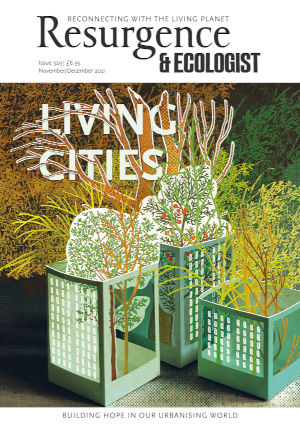The Atlas of Disappearing Places begins with mention of the pandemic of 2020–21 and how it revealed our shared humanity and essential vulnerability. However, the pandemic also revealed how much we care about some things, and some people, over others. More than 115 million people will have died worldwide in 2020 and 2021. Only a very small proportion of those deaths will have been because of the pandemic. For the younger adults and infants among that huge total, that proportion will be minuscule. Instead, poverty will have been the main cause of their early deaths, but because we do not see their poverty as a risk to us, we ignore their deaths year after year. So much for our shared humanity. My complaint about this book is that it applies a similar lens to the environment.
The book is well produced, but its central message reflects its San Francisco/US origins. In it, a fictional future government of Pakistan is castigated for choosing “to focus only on its food supply”. There is little appreciation in these pages of why it might do that or how the US was disproportionately responsible for creating a world in which it would have to do that in future. Wealth gaps are mentioned, and how the poor are most harmed. However, the mechanisms by which those gaps were created and how they are continually increased worldwide are hardly touched upon. Instead fears concerning issues such as climate migrants are raised, but why increase a fear of what has not yet and may not yet come to pass, when there is so much to fear that is already happening?
The book individualises responsibility: “The consumer choices we made in the twentieth century (and continue to make today) are causing our ocean to stagnate, stratify, and struggle to sustain some forms of life.” Throughout its text runs the metaphor of individual human bodies healing themselves and helping the environment to do the same: it is a very Californian mantra, and it grates. Projections are made for many very different regions of the world, as if this view and language from California can work worldwide. A scenario of the UK talks about “County Kent’s emergency rooms” being overwhelmed in 2035 when 700 children die due to mosquito-borne diseases, which then results in the election of a “Green–Liberal coalition government” in 2036. Something more believable might have been more useful.
In the foreword to the book, Lawrence Susskind, The Ford Professor of Urban and Environment Planning at MIT, points out: “Another reason adaptation decisions are so difficult is that there is enormous uncertainty involved. The socio-ecological systems we are talking about are so complex that we cannot model them precisely or anticipate the ways in which they are likely to evolve.” It could be claimed that we cannot model the more complex aspects of our social systems with any certainty at all, let alone how they integrate with ecology. At the most basic level, we do not know, give or take several billion people, how many of us there will actually be on this planet 79 years from now. The uncertainty of the United Nations population projections for the year 2100 as to whether there will be 8, 10, 12 or more billions of us around then are enough to tell you a lot about what we do not know. The authors of this book suggest, midway in: “The coming decades may force us all to become a bit more tolerant of the discomfort of uncertainty.” For this reader there was too much certainty in the predictions made here about how people might react; and – to end on a pedantic note – it is not really an atlas (“a book of maps”).







